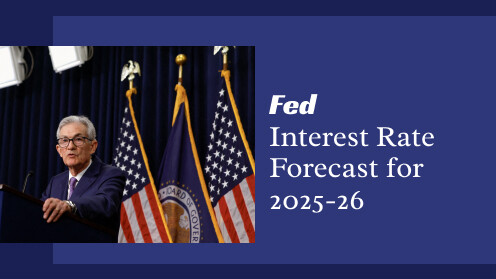3 Reasons Why We Are Not Heading Toward Another Housing Crash
With home prices softening, some are concerned that we may be headed toward the next housing crash. However, it is important to remember that today’s market is quite different than the bubble market of twelve years ago.
Here are three key metrics that will explain why:
- Home Prices
- Mortgage Standards
- Foreclosure Rates
HOME PRICES
A decade ago, home prices depreciated dramatically, losing about 29% of their value over a four-year period (2008-2011). Today, prices are not depreciating. The level of appreciation is just decelerating.
Home values are no longer appreciating annually at a rate of 6-7%. However, they have still increased by more than 4% over the last year. Of the 100 experts reached for the latest Home Price Expectation Survey, 94 said home values would continue to appreciate through 2019. It will just occur at a lower rate.
MORTGAGE STANDARDS
Many are concerned that lending institutions are again easing standards to a level that helped create the last housing bubble. However, there is proof that today’s standards are nowhere near as lenient as they were leading up to the crash.
The Urban Institute’s Housing Finance Policy Center issues a quarterly index which,
“…measures the percentage of home purchase loans that are likely to default—that is, go unpaid for more than 90 days past their due date. A lower HCAI indicates that lenders are unwilling to tolerate defaults and are imposing tighter lending standards, making it harder to get a loan. A higher HCAI indicates that lenders are willing to tolerate defaults and are taking more risks, making it easier to get a loan.”
Last month, their January Housing Credit Availability Index revealed:
“Significant space remains to safely expand the credit box. If the current default risk was doubled across all channels, risk would still be well within the pre-crisis standard of 12.5 percent from 2001 to 2003 for the whole mortgage market.”
FORECLOSURE INVENTORY
Within the last decade, distressed properties (foreclosures and short sales) made up 35% of all home sales. The Mortgage Bankers’ Association revealed just last week that:
“The percentage of loans in the foreclosure process at the end of the fourth quarter was 0.95 percent…This was the lowest foreclosure inventory rate since the first quarter of 1996.”
Bottom Line
After using these three key housing metrics to compare today’s market to that of the last decade, we can see that the two markets are nothing alike.
3 Reasons Why We Are Not Heading Toward Another Housing Crash

With home prices softening, some are concerned that we may be headed toward the next housing crash. However, it is important to remember that today’s market is quite different than the bubble market of twelve years ago.
Here are three key metrics that will explain why:
- Home Prices
- Mortgage Standards
- Foreclosure Rates
HOME PRICES
A decade ago, home prices depreciated dramatically, losing about 29% of their value over a four-year period (2008-2011). Today, prices are not depreciating. The level of appreciation is just decelerating.
Home values are no longer appreciating annually at a rate of 6-7%. However, they have still increased by more than 4% over the last year. Of the 100 experts reached for the latest Home Price Expectation Survey, 94 said home values would continue to appreciate through 2019. It will just occur at a lower rate.
MORTGAGE STANDARDS
Many are concerned that lending institutions are again easing standards to a level that helped create the last housing bubble. However, there is proof that today’s standards are nowhere near as lenient as they were leading up to the crash.
The Urban Institute’s Housing Finance Policy Center issues a quarterly index which,
“…measures the percentage of home purchase loans that are likely to default—that is, go unpaid for more than 90 days past their due date. A lower HCAI indicates that lenders are unwilling to tolerate defaults and are imposing tighter lending standards, making it harder to get a loan. A higher HCAI indicates that lenders are willing to tolerate defaults and are taking more risks, making it easier to get a loan.”
Last month, their January Housing Credit Availability Index revealed:
“Significant space remains to safely expand the credit box. If the current default risk was doubled across all channels, risk would still be well within the pre-crisis standard of 12.5 percent from 2001 to 2003 for the whole mortgage market.”
FORECLOSURE INVENTORY
Within the last decade, distressed properties (foreclosures and short sales) made up 35% of all home sales. The Mortgage Bankers’ Association revealed just last week that:
“The percentage of loans in the foreclosure process at the end of the fourth quarter was 0.95 percent…This was the lowest foreclosure inventory rate since the first quarter of 1996.”
Bottom Line
After using these three key housing metrics to compare today’s market to that of the last decade, we can see that the two markets are nothing alike.

Tips for Cutting Costs: Boost Savings for Home Buying!
Create a budget by listing income sources, tracking spending, and identifying non-essential expenses to reduce. Set financial goals by researching housing markets, breaking down savings into monthly or yearly targets.

Will You Owe Taxes When You Sell Your Home?
Homeowners may owe taxes if their profit exceeds the exclusion limits when selling their home. Single filers can exclude up to $250K in profits; couples filing jointly can exclude up to $500K.
Mortgage Calculator: How Much You Need To Buy a Home in Utah at a Rate of 6.60%
The average rate on a 30-year mortgage has decreased to 6.60%. In Utah, the median home price is $595,000, requiring a 20% down payment of $119,000, resulting in a monthly payment of $3,040. With a 10% down payment, the upfront cost is $59,500, leading to a monthly...
How to Maximize Profit When Selling a Damaged House
Selling a damaged house can still be profitable if you follow certain strategies. Start by staging the property to highlight its best features. Make necessary repairs without overspending. Improve curb appeal by cleaning up the exterior. Depersonalize and deep-clean...
Realtor.com 2025 Housing Forecast
In 2025, home prices are projected to rise by 3.7%, with mortgage rates averaging 6.3%. The housing market may experience shifts due to potential regulatory and tax changes under a Trump administration. Home sales are expected to increase by 1.5%, while for-sale...
4 mortgage interest rate scenarios that could occur in 2025
Mortgage rates have fluctuated since January 2024, starting near 7% and briefly dropping to 6.15% in September before rising to an average of 6.93%. Experts predict various scenarios for 2025, including rate stability, gradual declines, continued volatility, or...

Fed Interest Rate Forecast for 2025-26: Expert Insights
Fed Funds Rate Trends Forecast: - 2025 rate: drop to 4.0% - 2026 rate: to hold ~3.8% Economic Outlook for 2025: - GDP growth: taper from 1.8% to 2.5% by year-end - Rate cuts respond to slower economic growth

Winter Savings Tips for 2025 Homebuyers
Track your spending this winter to identify areas for cost-cutting before buying a home in 2025. Winter-proof your home to reduce energy bills and save money during the colder months.
Western state governors eye public lands for affordable housing development
Colorado Gov. Jared Polis and other Western governors are exploring the use of federal lands to address the affordable housing crisis in the region. In Nevada, officials are leveraging a federal law to acquire land for development at reduced prices, while...
Utah’s Fall Housing Market Shows Growth Despite Higher Prices
Utah's fall housing market in 2024 experienced a 1.6% increase in home prices and a 12.5% rise in sales compared to the previous year, with a median home price of $553,000. In Salt Lake City, prices rose by 7.3% to an average of $550,000, although sales decreased...
